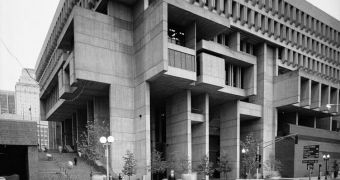There are numerous reasons why engineers and architects would want to employ smart materials in their constructions. For starters, they are more durable, they are especially designed for the task at hand, reduce repair costs, and extend the life of the structures they make up. Some even have self-healing properties, but all of them are very expensive – and this is their major drawback. Due to their complexity, they cannot be manufactured easily, and this is why they come accompanied by a large price tag. But that is all about to change now, at least for concrete. A graduate student at the University of Rhode Island has managed to design self-healing concrete that is cost-effective to produce.
The new material was designed, developed, and tested by URI Master's degree candidate Michelle Pelletier. Her approach is extremely simple, and also tremendously effective. It addresses a well-known natural flaw of concrete, namely the fact that stress causes this material to develop small cracks within its structure. Over time, the cracks widen, and can eventually weaken the concrete to the point where the entire structure gives way. But the new approach takes care of the problem at its root, right inside the concrete matrix.
Pelletier figured our a way of encapsulating a very efficient sodium silicate healing agent inside microscale capsules, which are then placed directly into the concrete matrix. As tiny cracks develop, they place undue pressure on the capsules, which in the end break, releasing their content. A chemical reaction then ensues between the sodium silicate and the concrete's calcium hydroxide, a chemical that is present naturally in the material. The two form a gel-like substance at first, which solidifies completely in about a week. The capsules' content basically fills in the gaps stress forms in concrete before they have a chance to grow and affect the material further.
“Smart materials usually have an environmental trigger that causes the healing to occur. What's special about our material is that it can have a localized and targeted release of the healing agent only in the areas that really need it. Self-healing concrete is a big research field right now. But many of the approaches being taken by other researchers have not ended up being economically feasible for commercial production,” Pelletier explains. For this project, she has collaborated with Arijit Bose, who is a chemical engineering professor at the URI.
“Building concrete is routinely fixed with steel reinforcement bars to compensate for low tensile strength, but they are extremely susceptible to corrosion. We are exploring if the release of the agent will result in corrosion inhibition by two mechanisms. First, the reduced water transport due to the filled pores and reduced interconnectivity within the matrix may result in less moisture reaching the metal and ultimately less corrosion. Also, silicates can deposit on the surface to form a protective film which may also help with reducing the corrosion rate of the steel bars. If self-healing concrete can lengthen the life of the concrete and reduce maintenance and repairs, it will ultimately reduce the production of excess amounts of concrete and result in a decrease in CO2 emissions,” she concludes.

 14 DAY TRIAL //
14 DAY TRIAL //